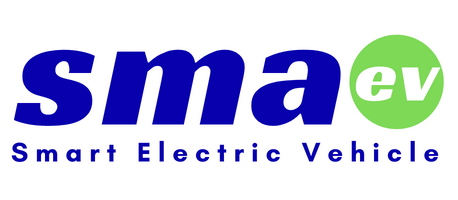The rapid development of electric vehicles is irreversible, and 3 major aspects must be paid attention to in 2022
Although the recall of electric vehicles due to safety concerns has been heard from time to time, such as the Chevrolet Bolt owned by General Motors (GM) in August last year, and the Model 3 and Model S of Tesla at the end of December, it still does not affect the world. The rapid development of electric vehicles.
The rapid development trend is irreversible
According to the estimates of the Industrial Technology Research Institute (ITRI), due to the gradual popularization of vaccines and the economic recovery, the global automobile sales in 2021 will grow by about 11.5%, of which the sales of electric vehicles (including hybrid and pure electric vehicles) are estimated to grow by nearly 90%. It is expected to exceed 9 million vehicles. The forecast report of Bloomberg New Energy Finance (BNEF) also pointed out that global electric vehicle sales in 2021 will increase by more than 80% compared with 2020.
As the issue of global warming has attracted attention, countries around the world have also adopted relevant decarbonization policies in order to achieve carbon emission targets. More than 20 countries have formulated the comprehensive replacement of traditional fuel vehicles for electric vehicles between 2025 and 2050. China and the United States have also set CO2 emission regulations for car manufacturers. If they fail to meet the standards, they will face huge fines, forcing car manufacturers to actively transform. In addition, governments around the world are also actively providing relevant subsidy measures, such as subsidies for electric vehicle purchases and wide-ranging charging piles.
With the support of green energy policies of various governments and the decline in the price of key raw materials such as batteries, it will help to increase consumers’ willingness to buy electric vehicles, and the popularity of electric vehicles in the world will be faster than previously expected. ITRI estimates that the global electric vehicle compound annual growth (CAGR) will be as high as 31.6% from 2021 to 2023; BNEF estimates that the number of global passenger and commercial electric vehicles will reach 677 million by 2040.
3 aspects to focus on in 2022
Standing on the cusp of electric vehicles with such a strong development momentum, what aspects should we pay attention to in 2022?
1. Semiconductors and Electronic Control Components
Electric vehicles have driven a huge increase in the types and demand of semiconductors, among which the third-generation semiconductors – gallium nitride (GaN) and silicon carbide (SiC) are worthy of attention. Silicon carbide has the characteristics of high temperature resistance, high pressure, high frequency, and high power. One of the reasons why Tesla’s electric vehicles lead the way in battery life is the bold use of silicon carbide parts to reduce the loss of energy transmission between components. The global electric vehicle upgrade to 800V high-voltage architecture will also push up the demand for silicon carbide. TrendForce estimates that the global electric vehicle market demand for 6-inch silicon carbide wafers will increase from 120K pieces in 2021 double to 230K pieces in 2022, and will maintain this growth trend all the way to 1.69 million pieces in 2025.
Among the electronically controlled power components, the diode is the most important. At present, car manufacturers have changed from traditional diodes (STDs) to high-efficiency diodes (LLDs). Considering the requirements of safety and the comfort of the driving space, in addition to the existing low-power components, voltage regulators, etc., the introduction of sensors or equipment such as navigation, temperature, image monitoring, safety detection, etc. Driven by a substantial increase in the demand for automotive diodes.
2. Endurance and fast charging
The endurance of electric vehicles has always been the focus of attention from all walks of life. According to foreign media reports, a driving distance of 250 miles (about 402.3 kilometers) between two charges will be the basic requirement in 2022, and electric vehicles below this standard will be Difficult to compete in the market.
In addition to the longer the battery life, the better, shortening the charging time and speeding up the charging speed as much as possible will also be the focus of competition among automakers in 2022. The current fastest chargers operate at 800 volts and can provide up to 350 kilowatts of charging, but each car manufacturer must find a better solution by balancing charging speed, battery stability, and battery life with various technical considerations.
3. Batteries and charging piles
In 2022, the automotive battery will also become a battleground for military strategists. It is reported that electric vehicles are expected to fully use lithium iron phosphate batteries (LFP), making battery materials and power components emerge one after another. Toyota confirmed at the just-concluded CES 2022 that the first Toyota (gas-electric hybrid vehicle) equipped with solid-state batteries is expected to debut in 2025, and it also announced that it will mass-produce solid-state battery pure electric vehicles in 2030.
Although hydrogen fuel cells are difficult to popularize due to factors such as cost, infrastructure, and raw material prices, they have the advantages of high endurance and rapid energy replenishment, and are very suitable for large vehicles with simple routes, such as long-distance passenger transport and linked trucks. .
In addition, charging piles are also expected to develop rapidly in 2022. Taking the United States as an example, it is expected that more than half of new car sales will be electric vehicles by 2030. Therefore, up to 174 billion U.S. dollars in subsidies for electric vehicle purchases and charging piles are proposed, of which 15 billion U.S. dollars will be invested in highways and highways. Local communities set up 500,000 fast charging piles.
Epilogue
In the future, with the continuous improvement of technologies such as software (platform), 5G network, and materials, electric vehicles will continue to develop towards modularization, intelligence and light weight, and quickly implement the beautiful blueprint of V2X for the Internet of Vehicles.






